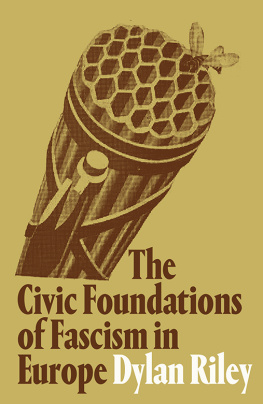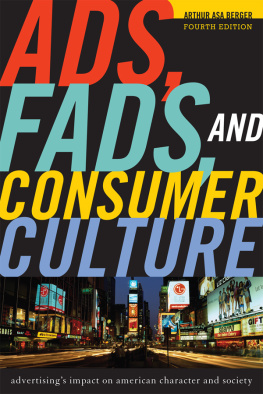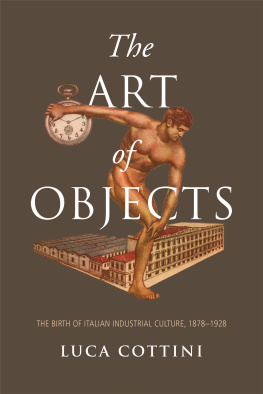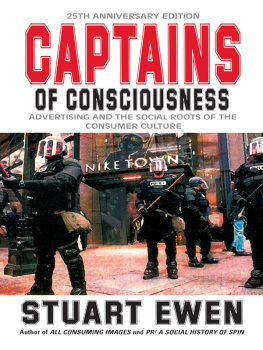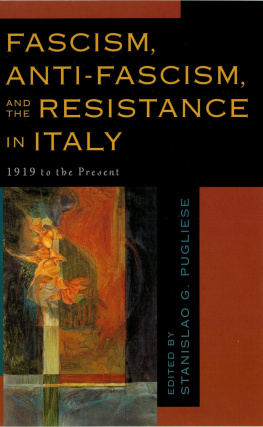Marketing Modernity
Marketing modernity traces the development of consumer culture in Italy from the 1920s to the present day. In so doing, Adam Arvidsson argues that the culture of consumption we see in Italy today has its direct roots in the social vision articulated by the advertising industry in the years following the First World War. He then goes on to discuss how that vision was further elaborated by advertisings interaction with subsequent major actors in twentieth-century Italy: Fascism, post-war mass political parties and the counter-culture of the 1960s and 1970s. Based on a wide range of primary sources, this fascinating book takes an innovative historical approach to the study of advertising and consumption.
Adam Arvidsson is Assistant Professor in the Department of Film and Media at the University of Copenhagen.
Studies in Consumption and Markets
Edited by Colin Campbell
Department of Sociology, University of York, UK and Alladi Venkatesh
Graduate School of Management, University of California, Irvine, USA
Consumption has become a major focus of research and scholarship in the social sciences and humanities. Increasingly perceived as central to any successful understanding of the modern world, the meaning of the individual and collective consumption of goods is now a crucial issue at the heart of numerous contemporary debates on personal identity, the social and cultural structure of postmodern societies, and the historical development of modern industrial society. This new series will publish work on consumption-related topics across a number of disciplines.
Titles in this series include:
The Dynamics of Advertising
Barry Richards, Iain MacRury and Jackie Botterill
Ordinary Consumption
Edited by Jukka Gronow and Alan Warde
The Changing Consumer: Markets and Meanings
Edited by Steven Miles, Alison Anderson and Kevin Meethan
Food and Cultural Studies
Bob Ashley, Joanne Hollows, Steve Jones and Ben Taylor
Marketing Modernity: Italian Advertising from Fascism to Postmodernity
Adam Arvidsson
Marketing Modernity
Italian advertising from Fascism to postmodernity
Adam Arvidsson
First published 2003
by Routledge
11 New Fetter Lane, London EC4P 4EE
Simultaneously published in the USA and Canada
by Routledge
29 West 35th Street, New York, NY 10001
Routledge is an imprint of the Taylor & Francis Group
This edition published in the Taylor & Francis e-Library, 2003.
2003 Adam Arvidsson
All rights reserved. No part of this book may be reprinted or reproduced or utilized in any form or by any electronic, mechanical, or other means, now known or hereafter invented, including photocopying and recording, or in any information storage or retrieval system, without permission in writing from the publishers.
British Library Cataloguing in Publication Data
A catalogue record for this book is available from the British Library
Library of Congress Cataloging in Publication Data
A catalog record for this book has been requested
ISBN 0-203-41753-4 Master e-book ISBN
ISBN 0-203-41902-2 (Adobe eReader Format)
ISBN 0415270448 (Print Edition)
To my mother, Birgit Arvidsson
Illustrations
Figures
Tables
Acknowledgements
This book began as a PhD project at the European University Institute in Florence. I am deeply thankful to my two supervisors, Gianfranco Poggi and Luisa Passerini, for their guidance and support. The external members of my exam committee, Victoria de Grazia and Peppino Ortoleva, also made vital contributions to the completion of that project. I would also like to thank Bianca Beccalli, John Brewer, Enrica Capusotti, Gina Castillo, David Ellwood, Simonetta Falasca-Zamponi, Nando Fasce, Claudio Fogu, Nicolas Guhilot, Caterina Paolucci, Margaret Somers, Bo Strt and Erik Tngerstad for their comments and suggestions. Gianpaolo Capisani shared his wide knowledge on Italian popular culture with me, and Cecilia Conti taught me what there is to know about Italian housewives. In reworking the manuscript I have benefited from suggestions and advice from my former colleagues at the University of East Anglia, Tim Dant, Judith Metha and Roberta Sassatelli. I have also profited from presenting and discussing my work at a number of conferences and workshops, at the European University, the Centro di studi Euro-Americani, Piero Bairati at the University of Turin and through the Italian society for contemporary history (Societ italiana di storia contemporanea, SISCO). I thank those institutions and, in particular, Maurizio Vaudagna at the centro Bairati, for inviting me. People within the world of Italian advertising and market research let themselves be interviewed by me, sometimes repeatedly. I am particularly grateful to Francesco Alberoni and Gianpaolo Fabris. I have conducted most of my research at the Biblioteca Nazionale in Florence, the Biblioteca Comunale in Milan and the Circolo Giuridico in Siena. The Archivio Storico Barilla in Parma, the Fondazione Piaggio at Pontedera, the Centro Documentazione Rai in Turin and the Special Collections Library at Duke University have all let me benefit from their collections and archives. (Fondazione Piaggio, Archivio Storico Barilla and the Biblioteca Nazionale have also generously granted me permission to reproduce a number of images.) I thank the personnel of all those institutions. Most of the research behind this book was conducted during the four pleasurable years I spent as a researcher at the European University Institute. I am grateful for having had the opportunity to be part of that vibrant intellectual community. The mistakes and errors that will inevitably follow are my own responsibility.
Part I
From Fascism to Fordism
1 Introduction
Autumn 2001 at my local Sainsburys supermarket had an Italian theme. According to The Observers food columnist, Nigel Slater, who wrote the copy for the accompanying campaign brochure, the purpose was to introduce Brits to the rich regional variety of Italian food, beyond the now familiar vocabulary of pizza, pasta, espresso. Such lesser-known regional dishes are authentic, we were assured, but none of this means that Italian food is stuck in a time-warp, Nigel Slater admitted, showing his awareness of the floating or contested status of culture and identity. It is simply that they [Italians] have a respect for their traditions that other countries may have lost. Soon, Slater hoped, this love of good food will be as much ours as theirs.
It is not just that Italian food tastes good. As stressed throughout Sainsburys publicity drive, it stands for something that Brits, or at least Brits of the middle class, Observer, Sainsburys, New Labour kind, appreciate: authenticity, tradition, a sense of quality and, of course, individual creativity. (Sainsburys was eager to point this out: to cook an authentic Italian pasta meal it is not enough to mix the ready-made pasta with the ready-made sauce. One must also get creative, raid the fridge, add something of ones own.) Italy is not just another more or less exotic Other to consume, as in the case of Sainsburys range of Thai, Japanese or African food; it is an ideal to imitate. Indeed, at the Italian bar, Caf Nero, that has opened in the market square a couple of hundred yards from my local Sainsburys branch, the main selling pitch is the make-believe Italian environment. Employers are even instructed in how to behave Italian behind the counter and there is a tendency to hire only dark-haired staff. To those of us who remember Nino Manfredis immigrant worker in the 1973 film




